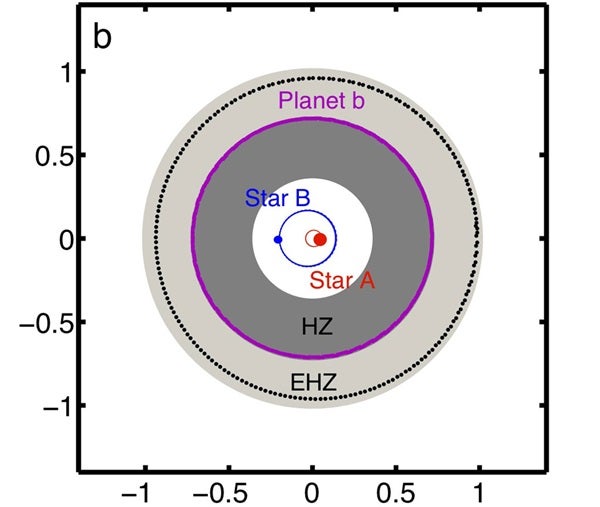The Kepler-16 System made headlines in September when researchers at NASA’s Kepler space telescope mission revealed the discovery of Kepler-16b, a cold, gaseous planet orbiting both stars, like Star Wars’ fictional Tatooine.
The Arlington team, using data from Kepler and previous research, has concluded that an Earth-type planet could exist in the system’s “habitable zone” as an exo-moon orbiting Kepler-16b. They also think an “extended habitable zone” exists outside the orbit of the gaseous planet under certain conditions. To host life in that zone, a terrestrial planet orbiting the two stars would need to have high levels of greenhouse gases (such as carbon monoxide or methane) in its atmosphere the scientists said.
“This is an assessment of the possibilities,” said Zdzislaw Musielak from the University of Texas at Austin. “We’re telling them where a planet has to be in the system to be habitable. We’re hoping they will look there.”
The Kepler Mission is a space telescope launched by NASA in 2009 that measures light from 150,000 stars. Scientists working with Kepler data look for changes in brightness that suggest a transit, or a planet passing in front of a star. They measure the star’s luminosity to determine whether the planet is in a “habitable zone,” an area where it would have a stable orbit and where conditions hospitable to life could exist.
The Arlington team based their conclusions about an “extended habitable zone” outside the orbit of Kepler-16b on work by scientists such as NASA’s Michael A. Mischna. That research says life could exist outside the traditional habitable zone, but it requires a more extreme planetary atmosphere, one in which chemicals create a strong back-warming effect, Quarles said.
“There is less light from the star, so the planet itself has to maintain more heat,” he said.










